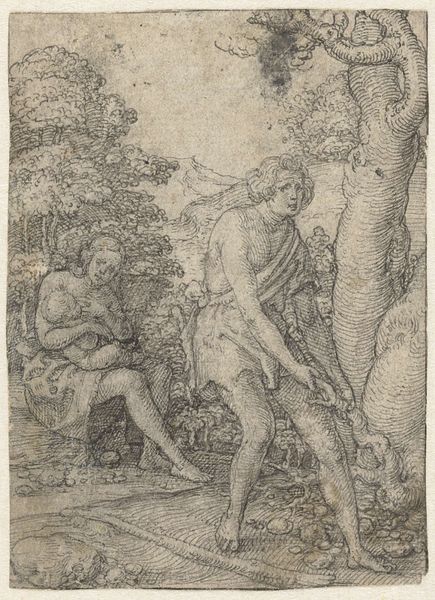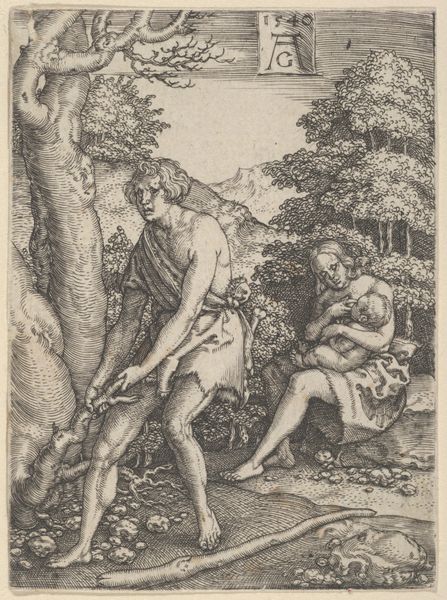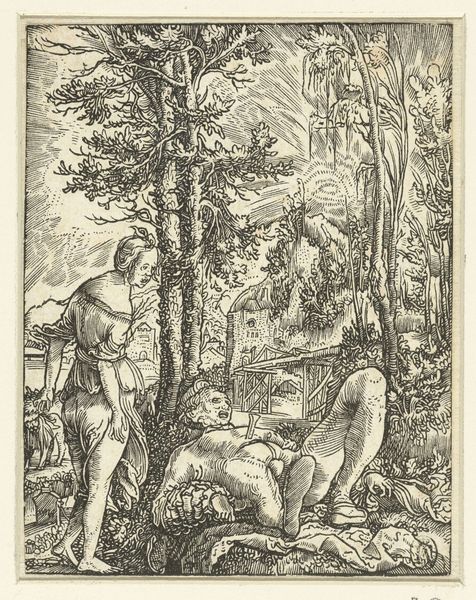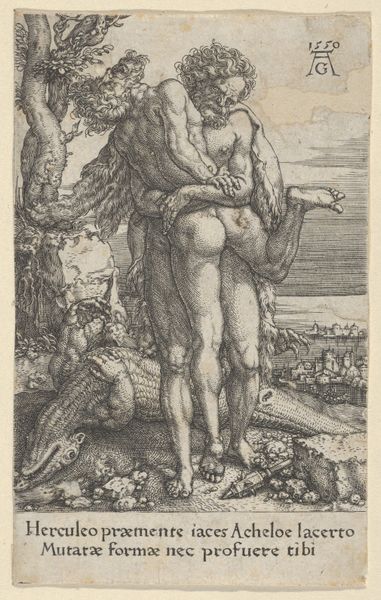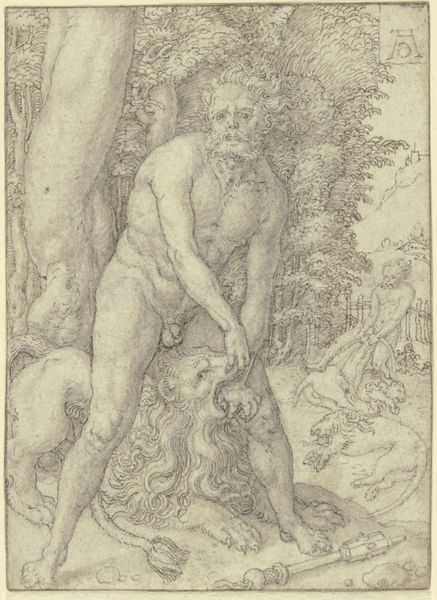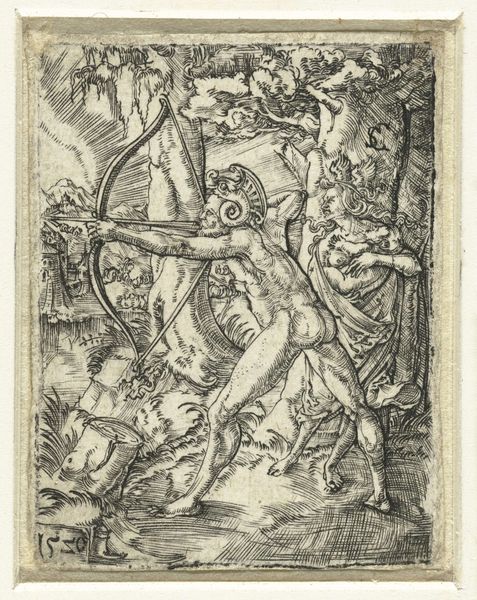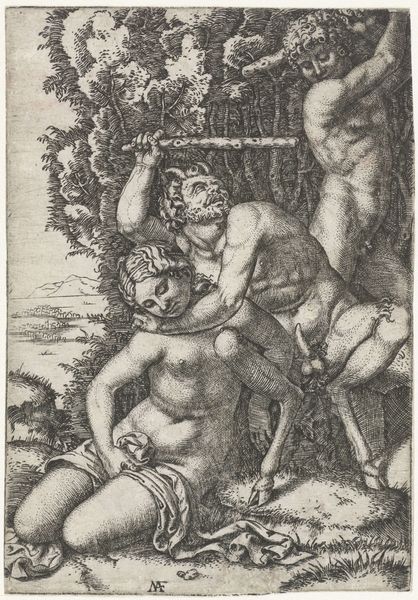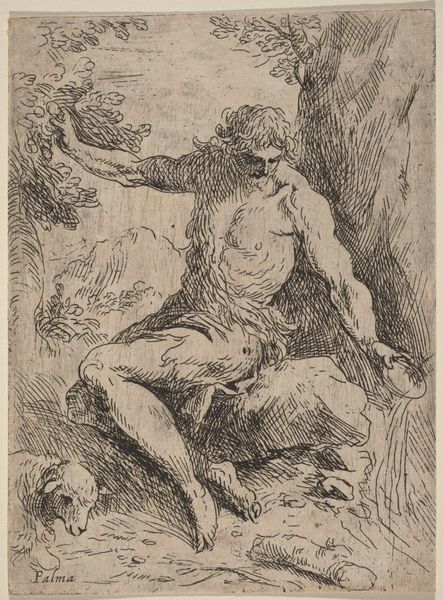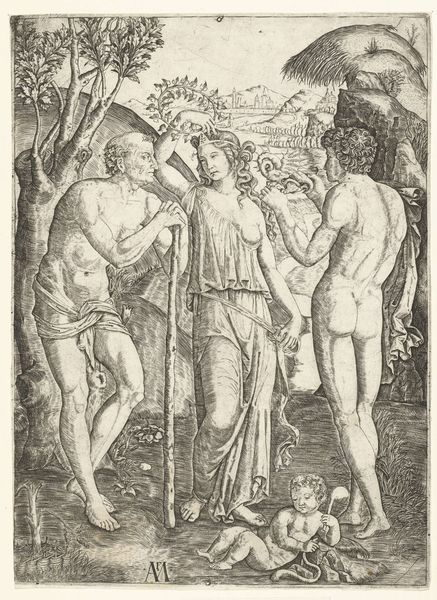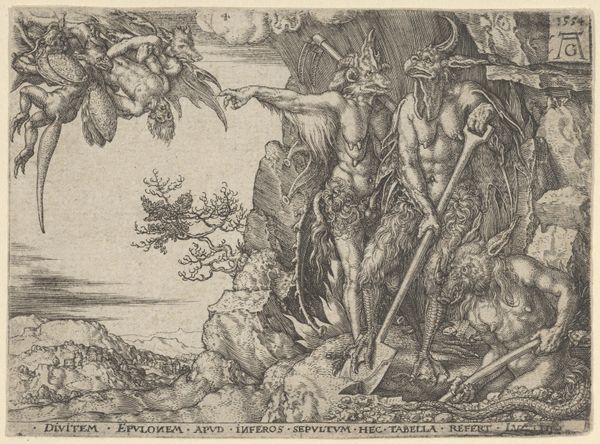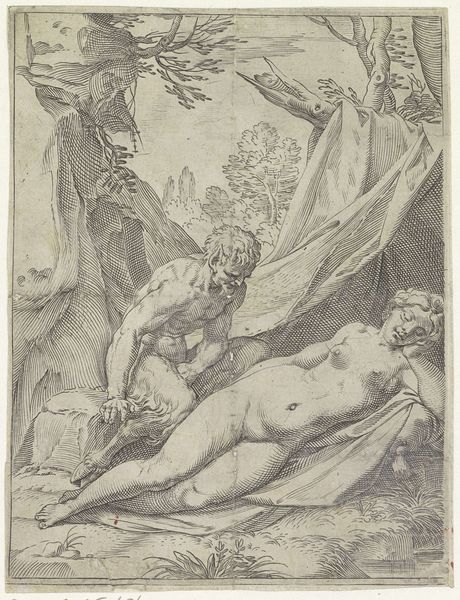
drawing, ink, engraving
#
drawing
#
toned paper
#
light pencil work
#
medieval
#
pen sketch
#
pencil sketch
#
figuration
#
personal sketchbook
#
ink
#
pen-ink sketch
#
line
#
pen work
#
sketchbook drawing
#
pencil work
#
history-painting
#
sketchbook art
#
engraving
Dimensions: height 67 mm, width 49 mm
Copyright: Rijks Museum: Open Domain
Editor: This delicate engraving by Heinrich Aldegrever from around 1540, titled *Adam and Death Plowing the Earth*, has a strange quality to it. It depicts a biblical scene, but its portrayal of death seems almost…domesticated. What strikes you most about the context and how it relates to the meaning? Curator: That's a keen observation. In 16th-century Europe, particularly within the context of the Reformation and its aftermath, death was a potent symbol often employed for didactic purposes. Notice how the artist presents death not as a triumphant conqueror, but as a laboring partner with Adam. Consider the rising merchant class and their relationship to religion at this point; does this image remind you of the saying 'Idle hands do the devil's work?' Editor: I can definitely see that perspective. The pairing of Adam and Death as laborers makes the idea less terrifying and perhaps even connects it to social morality at the time. Are there any indications of social messages being passed via art during this period? Curator: Absolutely. Art became a powerful tool for disseminating religious and social ideologies. Think about the printing press and how quickly ideas spread, then connect that back to imagery and accessible understanding. Artists were no longer solely reliant on the patronage of the Church or aristocracy and were finding more widespread appeal, a way of reinforcing a sense of community amongst common people. So, what does the image, in the Rijksmuseum, communicate today? Editor: The institutional context shapes its reception now, placing it within a broader narrative of art history. What was initially social commentary has transformed, it provides some commentary about what messages become timeless and relevant. Curator: Precisely. And how public understanding evolves across centuries, through history and culture. A nice discussion; thank you for these thoughtful reflections!
Comments
No comments
Be the first to comment and join the conversation on the ultimate creative platform.
